[2024] Shopify vs Squarespace: Which is the Best Ecommerce Platform?
Shopify and Squarespace both help you create websites to sell physical and digital products, as well as services — without the need for coding or web development skills.
You can build an ecommerce store out-of-the-box and start selling the same day.
However, there are important differences not only in their target markets but also in their main features, pricing, support, and so on.
How do the various qualities of each platform compare and which will work best for your ecommerce store?
Let’s compare Shopify and Squarespace side by side so that you can make up your own mind…
Shopify vs Squarespace: Background

Shopify started life in Ottawa, Canada in 2006 intending to provide a complete ecommerce solution for aspiring store owners who didn’t want to go to the time and expense of developing a custom store from scratch.
Shopify was intended as a solution for selling out-of-the-box. For the best part of two decades, the company has plowed its energies and resources into developing the best possible out-of-the-box ecommerce platform around.
Over the years, Shopify has grown into a leading ecommerce solution not only for larger stores and brands but for smaller boutiques, dropshippers and growing stores.
Shopify has also increased its number of content-creation tools available, becoming not only an ecommerce store provider but helping with the marketing side of the business too.

Squarespace began in 2004 with other thoughts in mind. It started life as a blog hosting service and soon started offering website-building solutions.
Like Shopify, it was intended to provide an out-of-the-box solution with drag-and-drop features to make life ultra-simple for users.
The New York City-based company grew rapidly by catering to those who wanted to build general-purpose websites with an easy-to-use content management system — rather than ecommerce functionality. That focus has only come more recently.
Shopify vs Squarespace: Market share
With almost four million live stores across the world (2.7 million of which are in the U.S.), Shopify is an undisputed market leader.
By comparison, Squarespace can boast almost three million live websites (2.2 million of which are in the U.S.) but many of these are general-purpose rather than ecommerce websites.
The latest ecommerce statistics suggest that Squarespace’s market share is 2.9 percent of all content management systems compared with 6.1 percent for Shopify. WordPress is the market leader by far, with a mammoth 64.3 percent of the market share.
When it comes to ecommerce websites, Shopify boasts around a 30 percent-plus market share in the U.S. (depending on who you read), reflecting its rapid rise in the past few years as it outpaces WooCommerce.
Shopify compares very favorably to the 10 percent of U.S. ecommerce websites using Squarespace.
Shopify also has an undeniable global spread, with around two-thirds of Shopify stores in the U.S. and Shopify merchants in more than 175 countries. Europe, Brazil, India and Japan are other major locations for Shopify besides the U.S.
Squarespace is very America-centric, with the UK, Europe, Australia and Canada as its main markets outside the U.S.
Leading Shopify brands
A few of the leading brand names that use the Shopify or Shopify Plus platform include:
- Gymshark
- Jenny Craig
- Kylie Cosmetics
- Red Bull
- Heinz

Leading Squarespace brands
A few of the leading brand names that use the Squarespace platform include:
- Etsy
- DoorDash
- Harper’s Bazaar
- TP Apparel (Tee Public)
- Princess Polly

Shopify vs Squarespace: Main features
Successful ecommerce websites look and act the part, creating a seamless shopping experience and breeding customer loyalty.
To achieve that yourself, you need an ecommerce platform that not only offers a great array of templates for store design but also helps you manage the back-end, marketing, order fulfillment, reporting and customer support. Getting all these moving parts working together is no simple thing.
Shopify and Squarespace have both enabled the construction of top-notch websites for so many years that the basics were mastered a long time ago. Both platforms can get you up and running online almost immediately with the minimum of technical expertise unless you need a truly customized solution.
So, your decision of whether to use Shopify or Squarespace will depend partly on which features stand out for each platform and provide the added extras you need.
Standout features of Shopify
Large ecosystem of apps to customize your store
The Shopify app store contains over 6,000 apps available in multiple categories, including store design, marketing and conversion, finding products, selling products, orders and shipping, and store management.
This provides almost unlimited functionality and assistance for both the back-end and in-store experience. Most of the apps are easy to install and integrate and many are free.
No other ecommerce platform can live with this level of additional functionality over and above the out-of-the-box solution provided by Shopify.
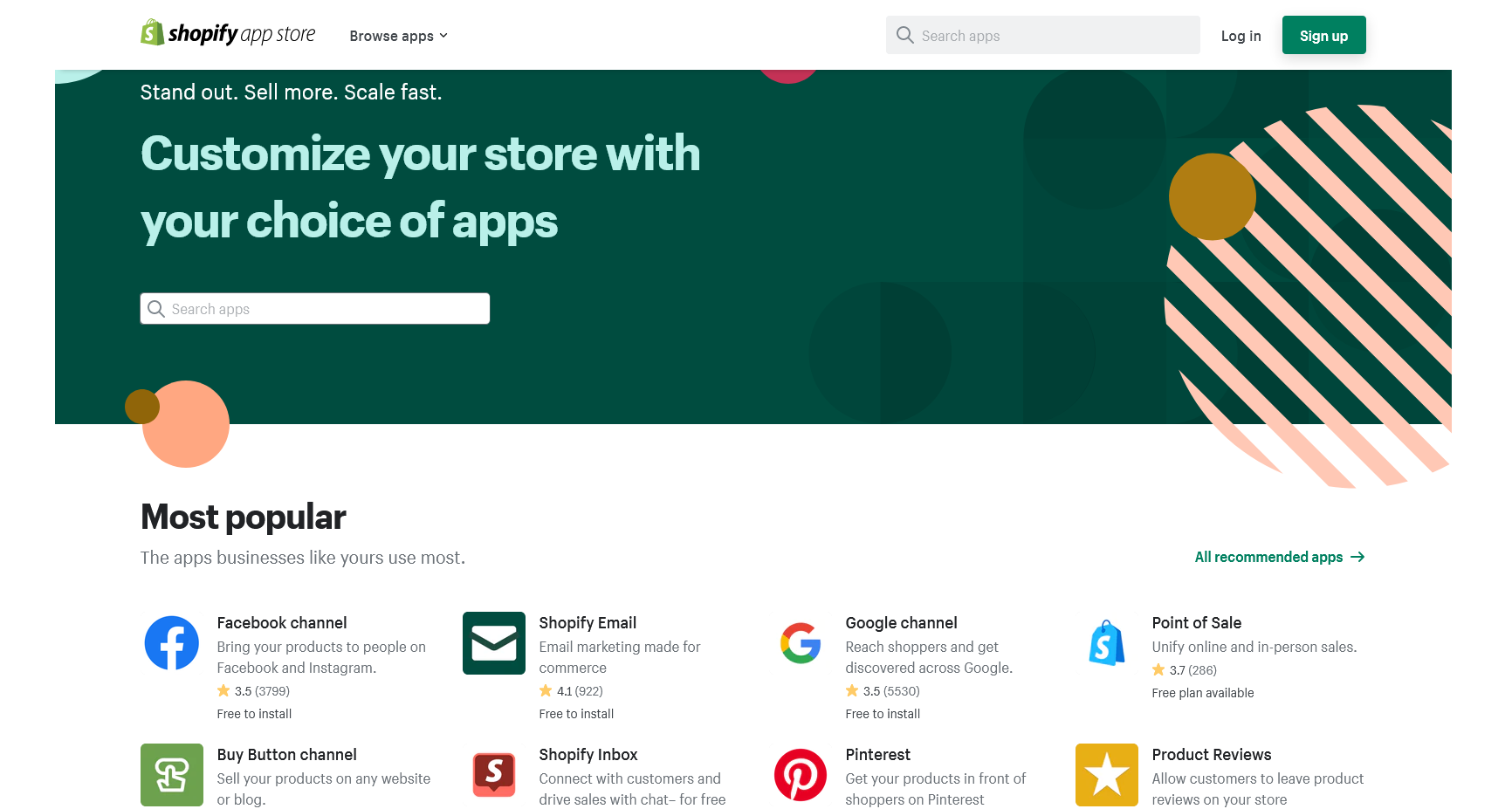
Remember, while the option of so many apps is a great strength of Shopify, if you choose paid apps, the additional monthly costs can mount up.
Fast-loading pages
Slow page-load times are a surefire way to ruin an online store. Customers will simply go elsewhere if you make them wait and Google will penalize you too.
Speed is rarely a problem for Shopify store owners with snappy performance practically guaranteed. Shopify automatically compresses images to the smaller WebP format and provides a store speed report to uncover opportunities to further optimize load times.
The average load time of a Shopify store page is faster than almost all of its competitors in the ecommerce space,
More ways to sell globally
Shopify Payments (its own payment gateway) is available in just under 20 countries around the world, supporting most major payment options with no transaction fees.
Shopify also offers over 100 other payment gateways and more ways for customers to pay than ever before—from Google Pay to Bitcoin. This makes Shopify stores convenient to shop in, attracting more visitors and increasing conversions.
Selling globally is made easy and cross-border selling is a focus of the platform as it enters its next growth stage. The impressive multilingual setup and ability to sell in multiple currencies out of the box aids this drive. Even more options are available with the Shopify Plus plan.
Built-in Shopify functionality also allows you to translate your website into five languages (or 20 languages with the Shopify Plus plan).

Excellent for smaller stores and dropshipping
Shopify is well suited to smaller stores and dropshipping. It includes many in-built tools for dropshippers and offers a lot of features for entrepreneurs who are looking for maximum choice when sourcing products.
There is also a large range of Shopify dropshipping apps available to help source and sell inventory.
Multi-channel selling
Shopify’s solution includes a sophisticated point-of-sale (POS) option for offline stores as well as online selling options, with automatic inventory syncing through its secure cloud system.
You can sell on Facebook and Instagram, as well as Amazon, Walmart, Google, Pinterest, Snapchat, and in person.
Free hardware and software are provided with the POS solution, which requires no third-party apps. It is available with all plans except the Starter plan (additional features are reserved for Shopify Plus customers).
Standout features of Squarespace
Easy-to-use interface
While the Shopify interface is not overly complex, the Squarespace interface is particularly elegant and easy to use. Its layout engine (and its recently added Fluid Engine) is very user-friendly and allows you to simply drag and drop content into pages.
You can also create different versions of your site for desktop and mobile:
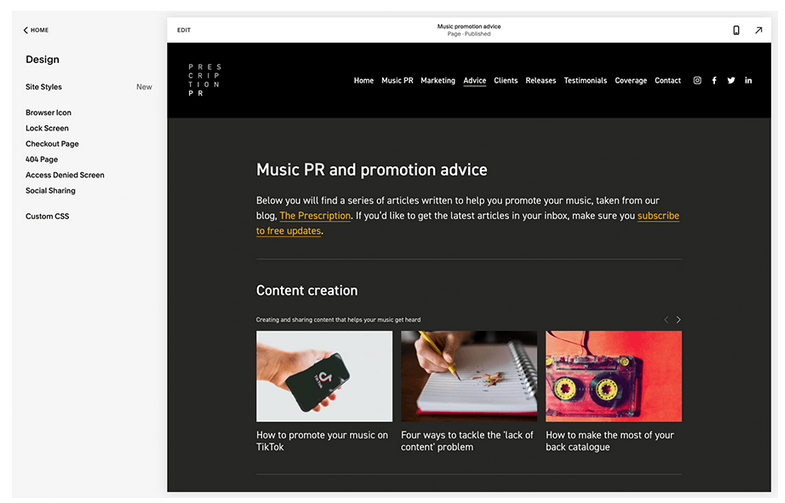
A lot of great free templates
One of Squarespace’s strongest points is the fact that it offers over 140 website templates for free — compared with a handful with Shopify. Themes are suggested for various industry types from Art through to Travel.

Squarespace templates can also be enhanced using built-in integrations with Unsplash and Getty images (free and paid-for image sites).
Custom domain provided
When you purchase an annual plan from Squarespace, you receive a free custom domain name (yoursitename.com). This lasts for one year, after which you’ll need to pay for it yourself. Shopify charges for this.
Another advantage of receiving a domain name directly from Squarespace is that connecting your domain name to your new store is made very simple, with all DNS settings pre-configured for you. (Note, you can also buy domains directly from Shopify).
Product image management
The visual side of the Squarespace offerings takes some beating and the product images are particularly strong.
Once you select an aspect ratio for your product images, the Squarespace system automatically crops all pictures to that ratio. You can also specify a focal point for individual product images.
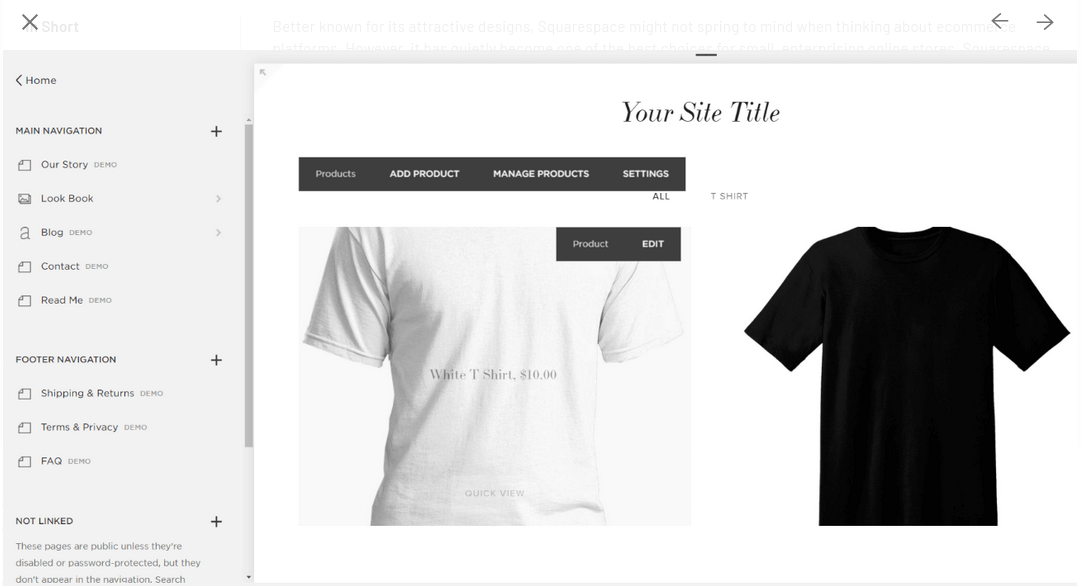
More product options
Another strength of Squarespace is the number of product options offered out of the box. Shopify allows just three (e.g., color, size or material) with 100 variants while Squarespace allows up to six with up to 250 variants.
Shopify vs Squarespace: Customer support
Interactions with customer support leave a lasting impression on ecommerce merchants. There are nearly always teething problems — even with out-of-the-box solutions.
Whether it’s an installation issue, a billing issue or a technical question, the performance of the support team can be a major factor in customer satisfaction with ecommerce platforms.
Shopify offers excellent 24/7 support by email, live chat and phone (available in most of its main markets) but not through social media. There are, however, live Shopify communities of developers and merchants and FAQ pages to refer to if necessary.
Squarespace offers 24/7 customer support by email, social media and live chat but there is no phone option available, which will be a “minus” for some store owners. The platform provides access to webinars and a Help Center where you can browse by product for answers to your questions:
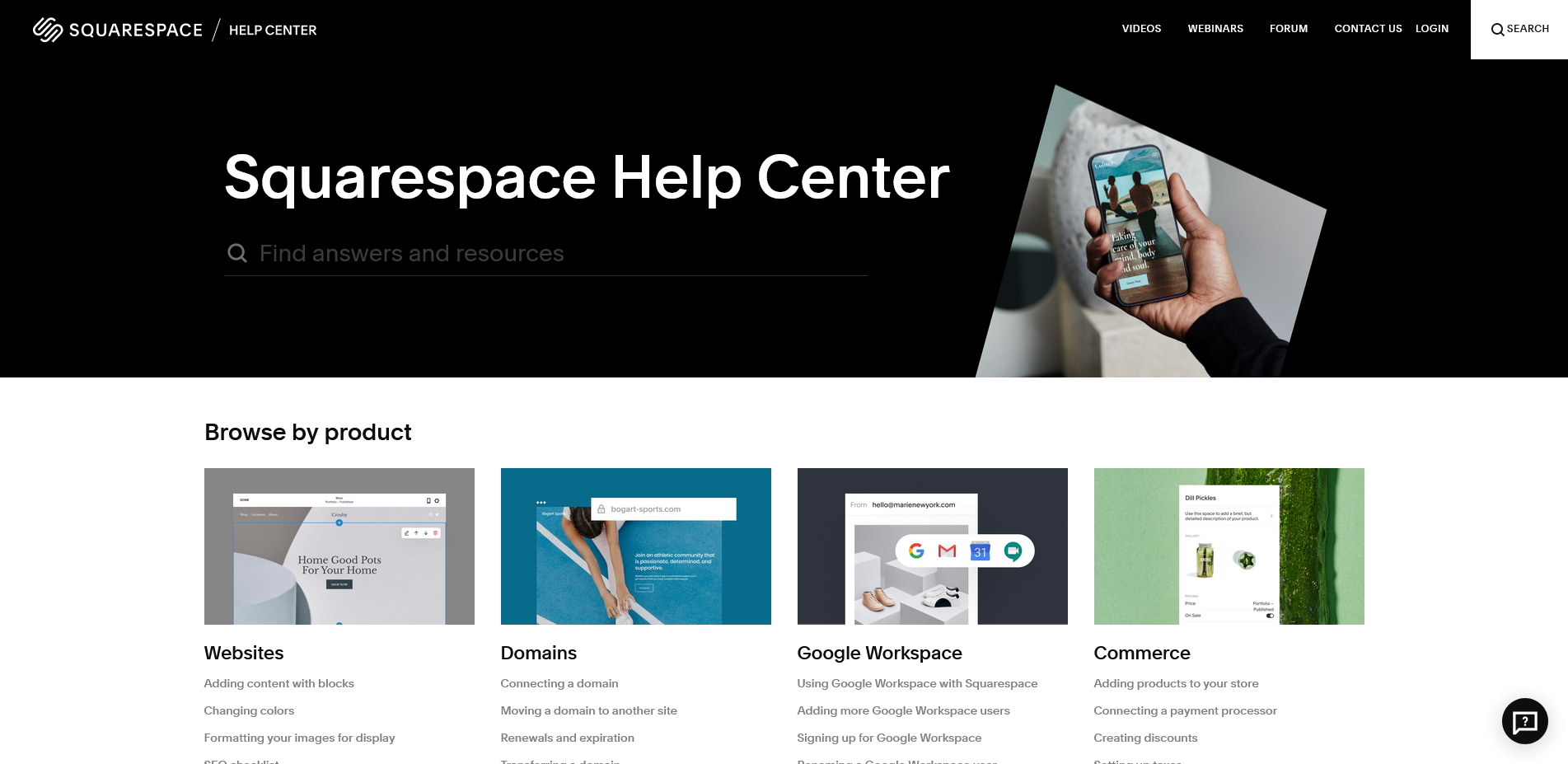
Shopify vs Squarespace: Pricing & Plans
The main Shopify plans are as follows:
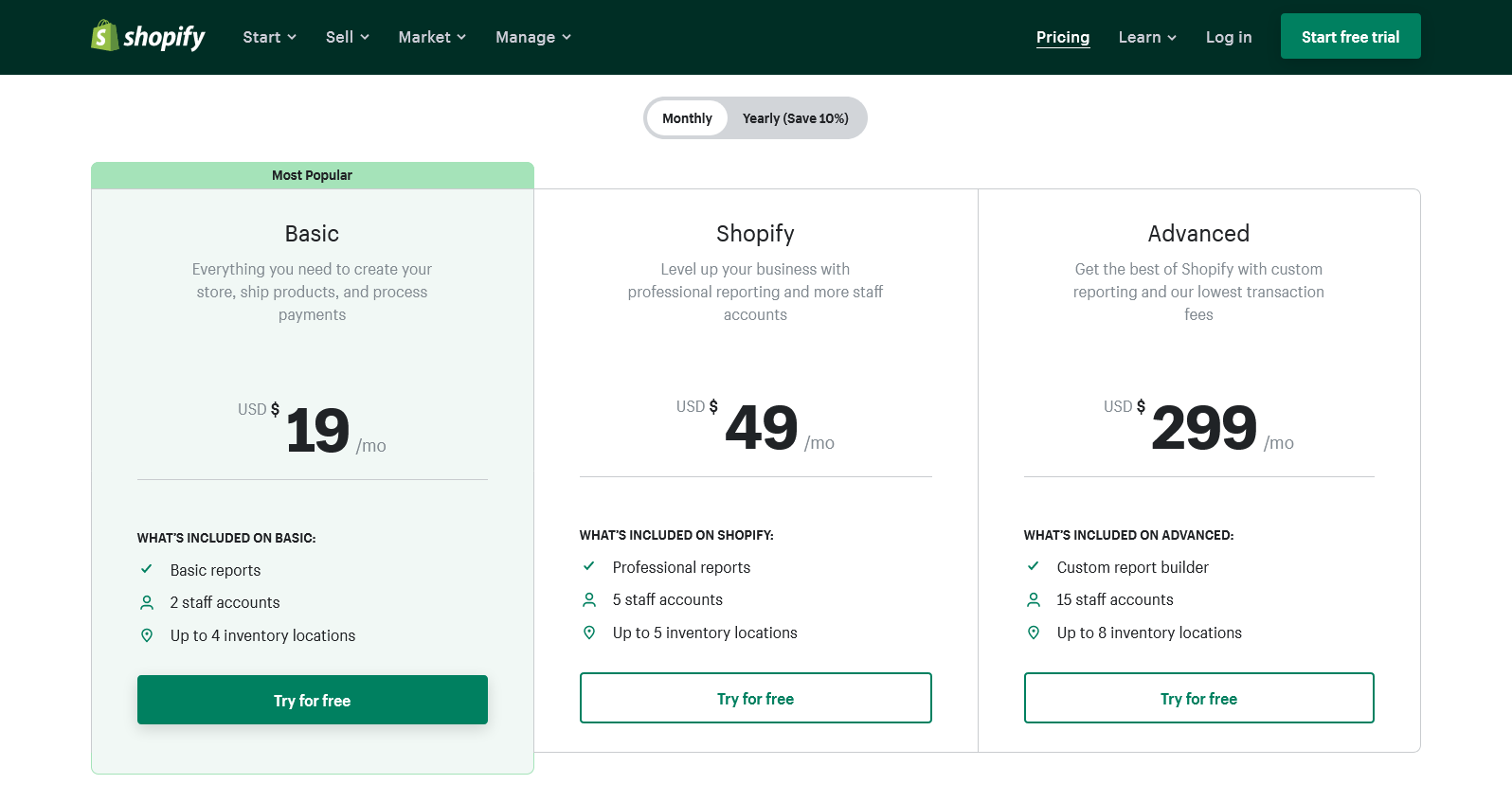
So, when paying monthly, there are three basic plans priced as follows:
- Basic Shopify: $19/month
- Shopify: $49/month
- Advanced Shopify: $299/month
The platform also offers alternative plans at both ends of the scale:
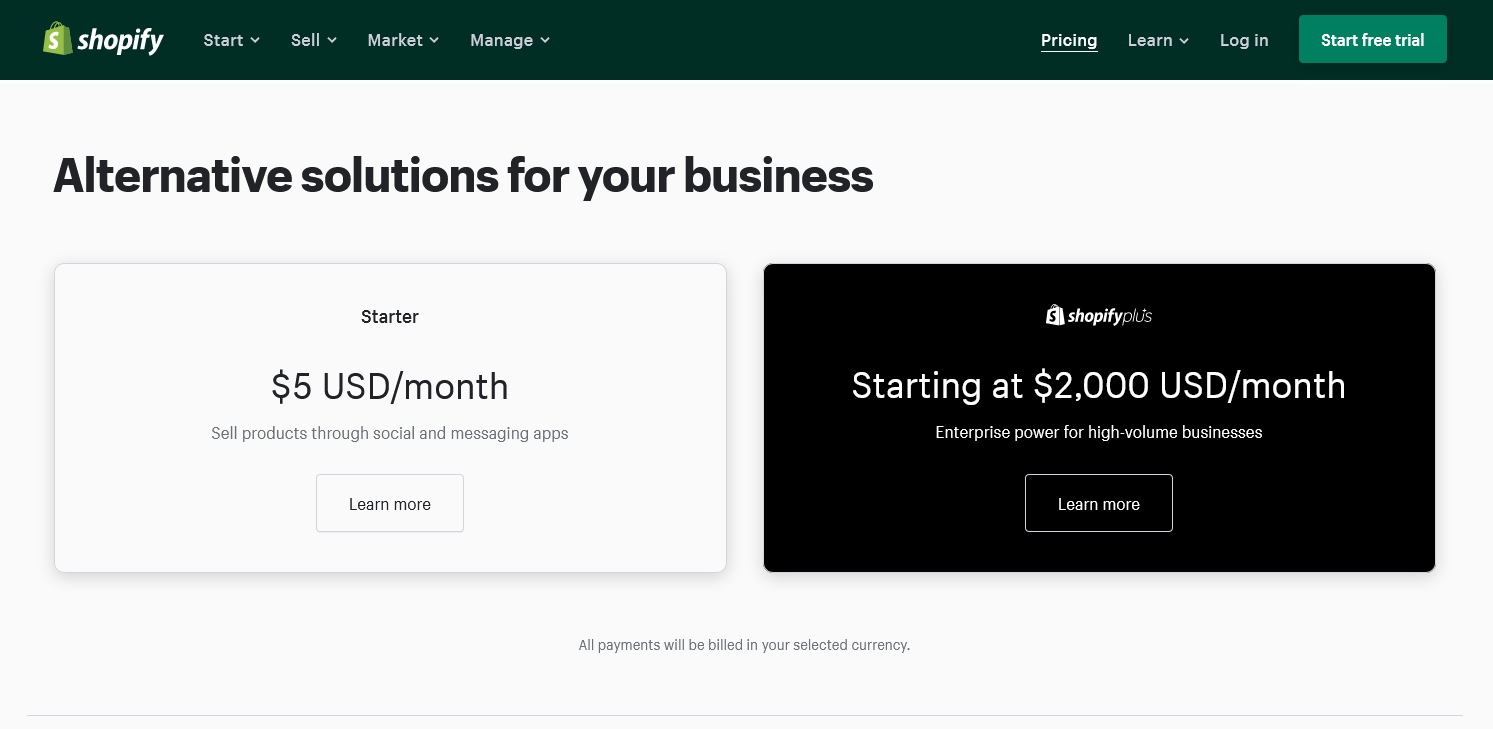
- A Starter plan for $5/month that allows you to add a Shopify buy button to an existing site or sell on Facebook
- Shopify Plus that starts at $2,000/month for enterprise clients
For its monthly plans, Squarespace offers the following:

So, there are four monthly plans available:
- Personal: $23/month
- Business: $33/month
- Basic Commerce: $36/month
- Advanced Commerce: $65/month
Like with Shopify, pricing is reduced significantly if you choose an annual arrangement. Enterprise pricing is available upon application from Squarespace.
The entry point for Shopify (the Basic plan) at $19/month limits the number of staff accounts (those who can log in and manage the store) to two accounts. The entry point for Squarespace (the Personal plan) at $16/month offers the same (two accounts) but you cannot actually sell anything on this plan.
In fact, the entry Squarespace plan does not include full integrations, customization, marketing or ecommerce functionality. If you want that, you’ll need at least the Business plan at $23/month.
If you need more advanced features like POS functionality, product reviews, customer accounts, advanced analytics, abandoned cart recovery, etc. you’ll need the Basic Commerce or Advanced Commerce version.
While the higher Shopify plans limit the number of accounts to five and 15, with Squarespace all other plans offer unlimited accounts.
Shopify currently offers a three-day free trial while Squarespace offers a free trial for 14 days.
Additional fees
In addition to the monthly plan fees, you may need to add up what you’ll pay for theme templates, third-party apps, and transaction fees.
Shopify currently offers nine free themes and 88 paid premium themes. Its free themes require more customizations and involve an investment of time. Many businesses, therefore, purchase premium themes, which range from $200 to $300 from Shopify or around $30 to $100 from third-party sites such as Themeforest.
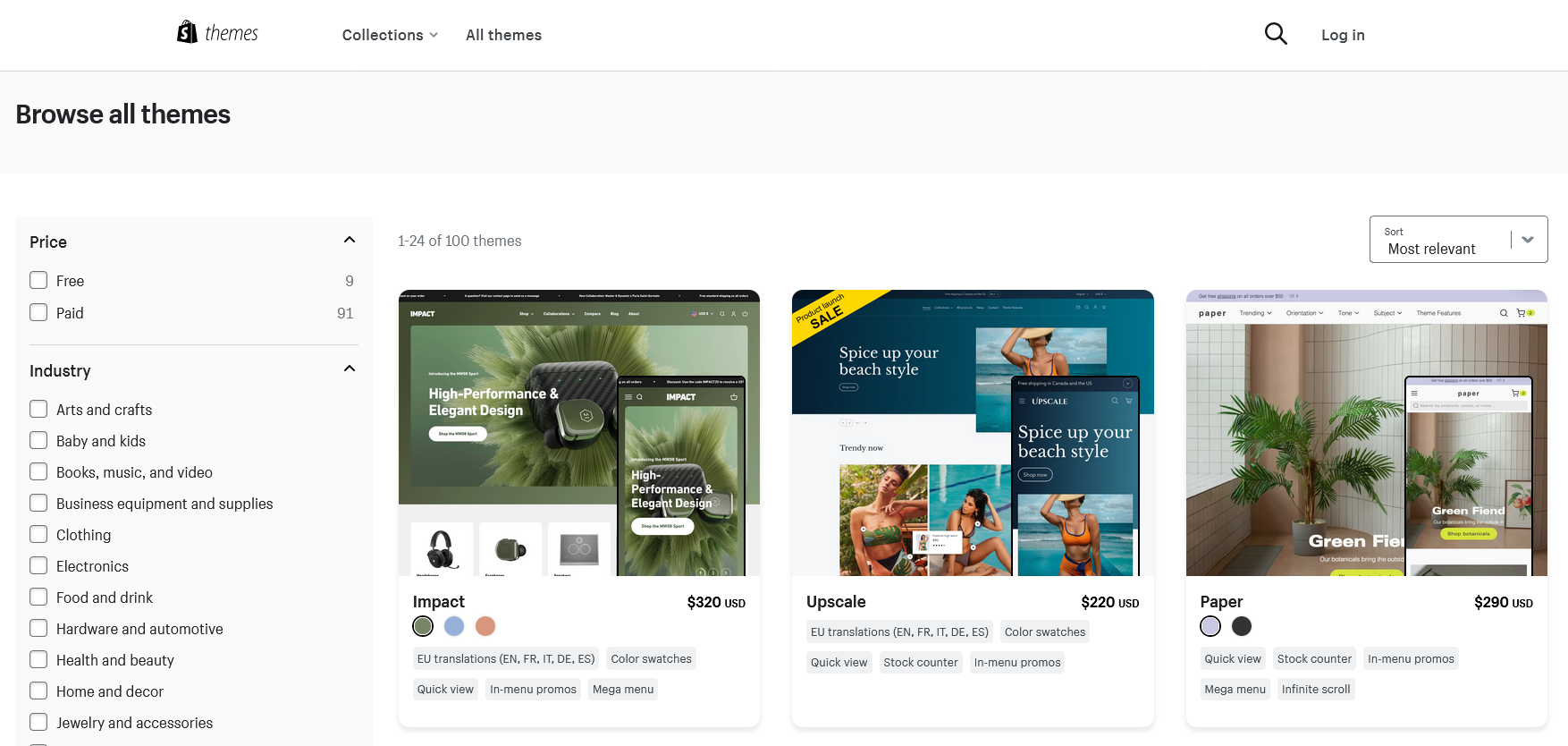
Shopify also charges transaction fees if you use any payment gateway besides Shopify Pay (which is powered by Stripe and cannot be used for dropshipping businesses). Transaction fees for other payment gateways are from 0.5 percent to 2 percent, depending on which Shopify plan you subscribe to.
If you use Shopify Pay, only the standard credit card fees applicable to your country will need to be paid. In the U.S., this is between 2.4% and 2.9% plus 30c per transaction, depending on the Shopify plan you choose.
Note that Shopify Pay is available in fewer than 20 countries currently so if you’re located outside of these, you’ll need to sign up to another payment gateway and pay fees to Shopify for the privilege:

With Squarespace, the wide variety of templates (over 140) are all free. There are no Squarespace transaction fees for Commerce plans (Basic and Advanced). However, a transaction fee of 3 percent applies to sales in the Business plan.
There will also be the standard Stripe and PayPal fees for payment processing depending on your country (Squarespace offers just these two payment processing options compared with over 100 with Shopify). Note that there is no Squarespace support for Google Pay.
Shopify or Squarespace for your store?
If selling products is the primary goal of your website, it’s hard to see past Shopify as it’s built from the ground up as an ecommerce solution, i.e., everything about the platform is designed to help you sell more — and you’re safe in the knowledge that as you grow, the platform can support your success as you scale up.
That’s an important differentiator to Squarespace, which does provide a solid ecommerce offering but whose chief focus has traditionally been on general-purpose websites and content management rather than ecommerce.
Both platforms allow you to easily start selling online without the need for a developer. Compare the main features and the pricing outlined above and choose the best match for what you want now and as you grow.
Both platforms have free trials so you can try them before deciding.
